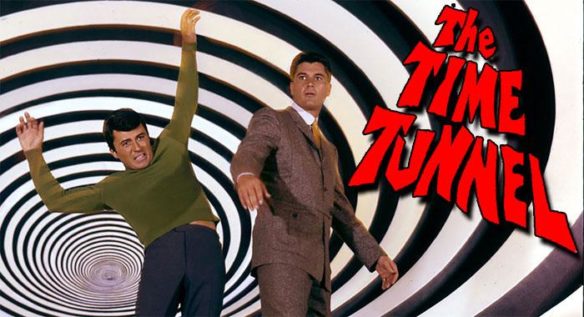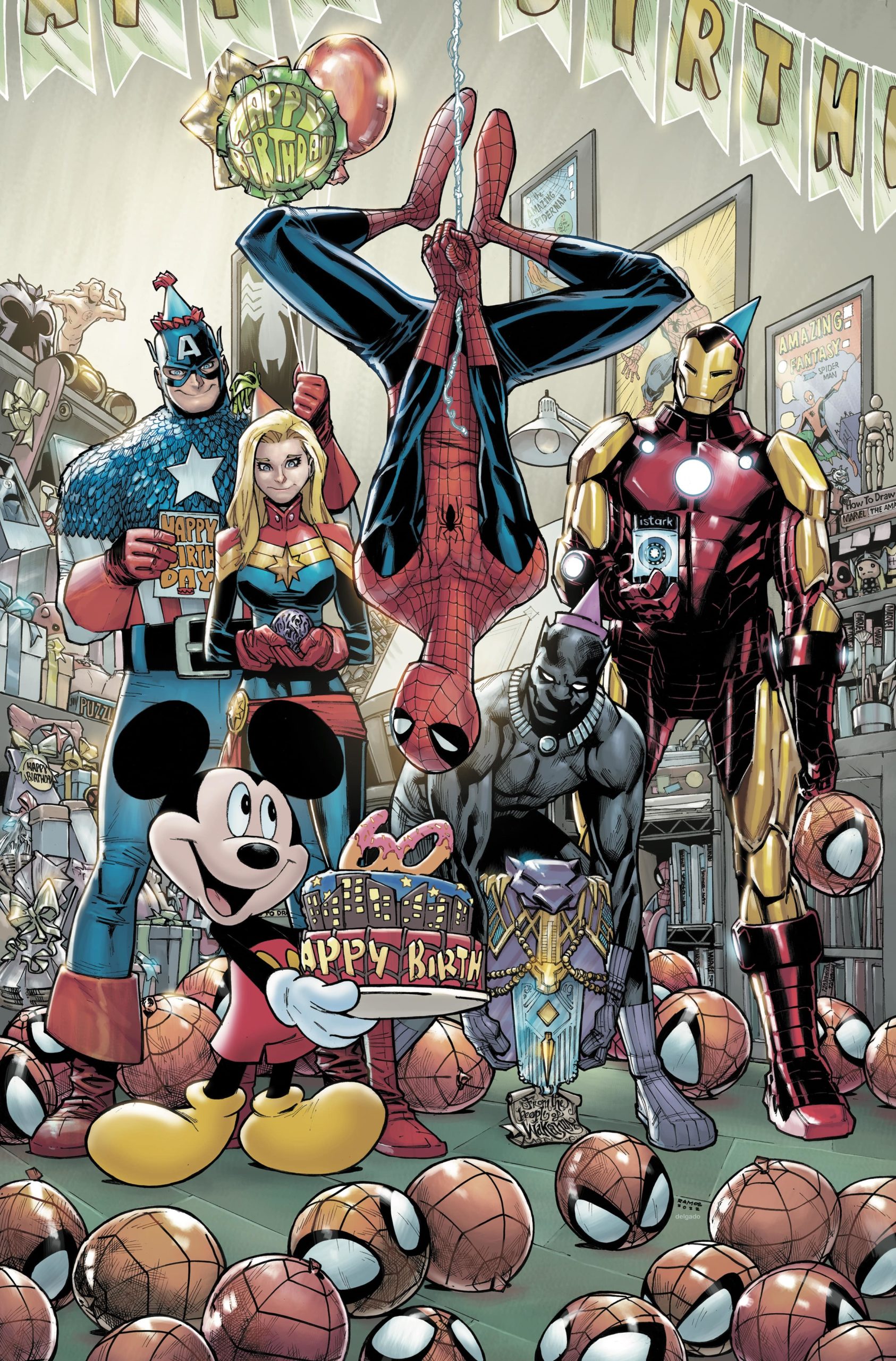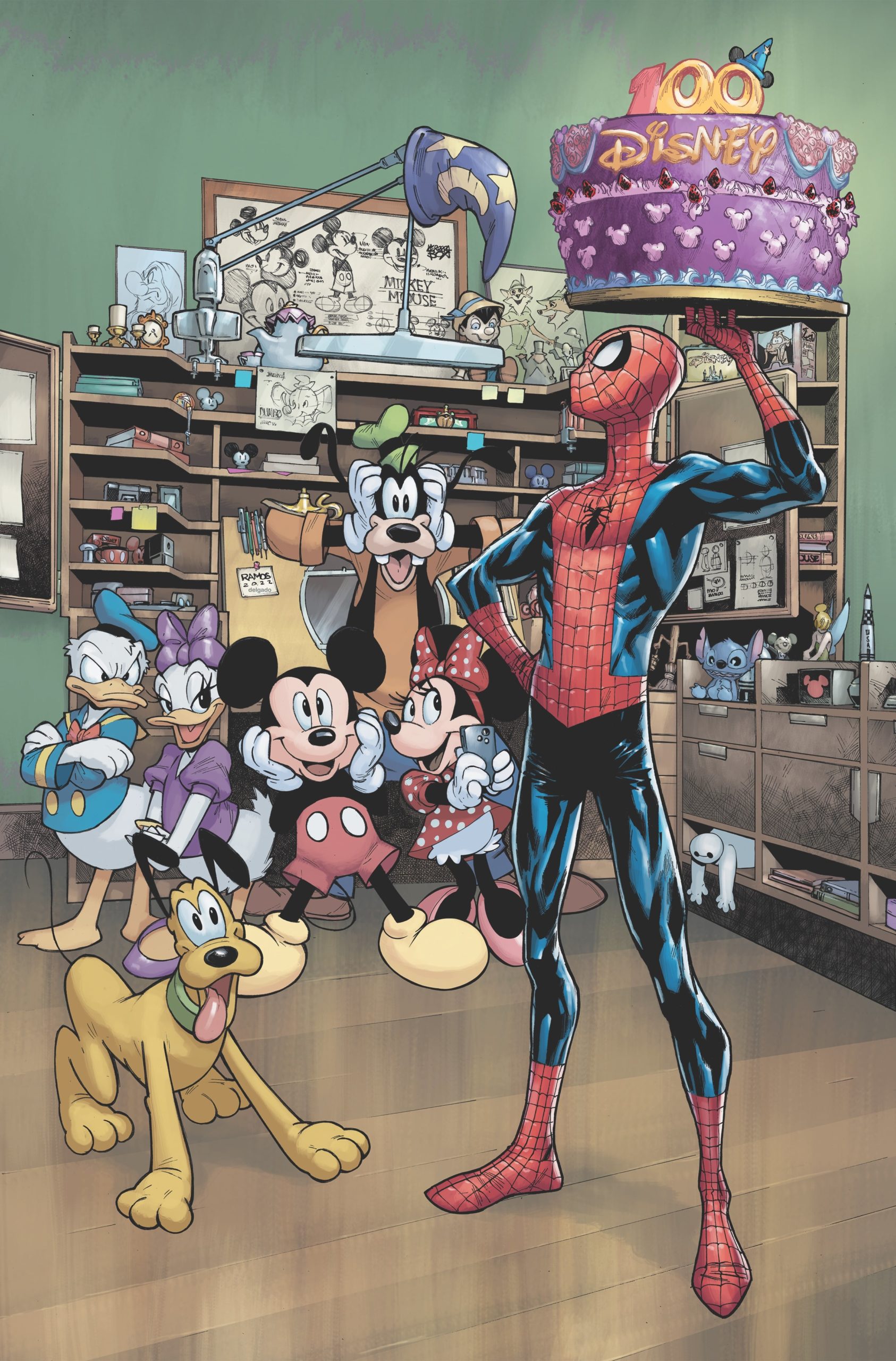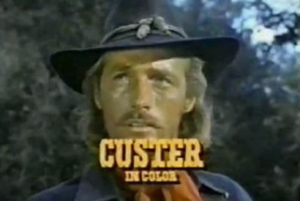(1) ANIME BANZAI IS SORRY. In the midst of apologizing for cancelling this year’s event, Utah’s Anime Banzai told Facebook followers their demise was primarily due to a committee member embezzling over $99,000. A criminal case is in progress. However, as they are still on the hook for their venue, the group says they are planning a three-day “Farewell to Banzai” party.
…We want to reiterate our remorse for losing sight of why we started this convention in the first place. It was our actions – and in fact, our inaction – over the years that caused a great deal of lasting hurt to former staff, volunteers, guests, and attendees. Concerns were brought to us time and time again, and we should have listened to them and taken action. We didn’t, and for that, we are truly sorry. You deserved better from us.
Additionally, we want to apologize for the frustration, confusion, and heartache that followed our decision to cancel Anime Banzai 2024. We see now that this decision felt like a violation of the trust and loyalty our community has shown us for almost two decades. The financial state of the organization, lack of staffing, and the event’s dwindling reputation made it seem like cancellation was the only feasible way to move forward. We realize now that we may have been too hasty, and should have explored more options before enacting what we saw as the only solution.
This time, we are listening. We are acting. We want to do what we can to make things right for those of you that are mourning the abrupt loss of the convention, as well as those financially impacted by the choices we made.
As some of you may know, a few years ago Banzai was the victim of significant embezzlement. A former staff member drained the organization’s accounts of almost 99,000 dollars, resulting in a criminal case that is still ongoing. Despite this, the convention continued to spend as though the accounts were full, making payments, purchases, and reservations that were beyond the organization’s means. This is something we should have noticed sooner. We should have stepped in and put a stop to recurring payments we could no longer afford, and cut costs wherever possible. We were not paying attention, and now find ourselves in a dire financial situation.
We do not currently have the funds to refund everyone who has already paid to attend the event, and have been working these last few weeks to plan something that would still provide attendees with something of value. With this in mind, we have decided to use the venue – which we can no longer cancel – to host a 3-day Farewell to Banzai party….
(2) GLASGOW WORLDCON REPORT AT SF2. [Item by SF Concatenation’s Jonathan Cowie.] SF² Concatenation has an advance post up ahead of its autumnal edition later this September of a first-timer’s review of the Glasgow Worldcon. This is the first of a few con reports SF² Concatenation are planning. More will appear in the spring edition in January.
Attending this year’s Worldcon in Glasgow (8-12 August, I made it for the middle three days) was a big deal for me. As a first-timer – and solo at that – I knew I needed a strategy. As a tabletop gamer and environmental activist of many years standing, this wasn’t my first time turning up to a large building populated by strangers with hats, beards and a certain personal flamboyance. But Worldcon was different – a nearly entire Scottish Event Campus with 7,081 in-person attendees and a little over 600 watching online; a mix of sub-cultural gathering, international literary festival and hard-nosed networking opportunity. In the face of this, being a mere spectator was not an option conducive to my own sanity…
You can see the rest of first-timer Tim Atkinson’s review of the Glasgow Worldcon conrep at the link.

(3) IS CLIMBING OVER THE DOCTOR A PATH TO POWER? From Deadline we hear “Conservative Party Leadership Hopeful Says She’s ‘Not Afraid Of Doctor Who’ As She Devotes Majority Of New Campaign Vid To Spat With David Tennant”.
Kemi Badenoch launched her campaign on X yesterday and unveiled a 30-second video prior, in which she focused almost solely on her very public spat with Tennant. Tennant, who played the 10th Doctor, told Badenoch to “shut up” in July due to her views on trans rights and she responded at the time that she “will not be silenced.” Big anti-trans names including JK Rowling also rushed to Badenoch’s defense, calling Goblet of Fire star Tennant part of the “gender Taliban” in a ranty X post.
In the new campaign vid, which can be watched in full below, Badenoch said: “When you have that type of cultural establishment trying to keep Conservatives down you need someone like me, who’s not afraid of Doctor Who, or whoever, and who’s going to take the fight to them and not let them keep us down. That’s not going to happen with me.” The vid begins with a clip of Tennant criticizing her….
(4) GAME WRITING. John David Beety kicks off a five-part series “Playtesting Game Narratives” with “Introduction to Game Writing and Playtesting” at the SFWA Blog.
In science fiction and fantasy (SFF) terms, game writing is exactly what it sounds like: writing for games. Calling oneself a game writer, however, is akin to declaring oneself a scientist. Divisions within game writing include game media, such as board games and video games; forms, such as planning dialogue trees and naming collectible cards; and publishers, from solo efforts to some of the world’s largest corporations.
This post introduces a series on playtesting, the process of improving games through hands-on feedback. Think of it as an editing pass for games, though with a twist. Unlike prose writing, which usually presents a single, stable experience for readers, games depend on player choices to create a range of experiences, from an early Game Over to a grand finale years in the making. Playtesting allows games to deliver great experiences for the greatest number of players.
By playing through a game and observing other players, playtesters can identify problems to fix, such as consistent reports of a disliked quest or a moment when story and gameplay mechanics seem to clash. Playtesters can be game-makers or outside parties, and it’s not uncommon to see the game-writing equivalents of authors and beta readers side by side in a multiplayer game’s playtesting sessions.
Future posts will offer specific insights on playtesting from experts in board games, card games, tabletop role-playing games, and video games. Here are brief overviews of those four game types, and the writing opportunities they provide….
(5) WORLDWIDE SERIES AWARD SUBMISSIONS OPEN. The Sara Douglass Book Series Award is taking entries through September 30.
ABOUT THE AWARD
- This year, the Sara covers series ending (in original publication anywhere in the world) between January 2021 and December 2023.
- The current judging year is deliberately excluded. This permits an earlier submissions deadline to allow adequate time for the judges to consider all works entered.
- The Sara Douglass Book Series Award is not an Aurealis Award as such, but a separate, special award conferred during the ceremony (like the Convenors’ Award for Excellence).
GENERAL ELIGIBILITY
- For the purpose of the Sara Douglass Book Series Award, a “series” is defined as a continuing ongoing story told through two or more books, which must be considered as ending in one of the years covered by the judging period.
- This award is to recognise that there are book series that are greater as a whole than the sum of their parts – that is, the judges are looking for a series that tells a story across the series, not one that just uses the same characters/setting across loosely connected books. It is anticipated that shortlisted works will be best enjoyed read in succession, with an arc that begins in the first book and is completed in the last.
- The series may be in any speculative genre within the extended bounds of science fiction, fantasy or horror (that is, if a book would be considered on an individual basis for one of the novel, or possibly novella, categories in the Aurealis Awards, the series may be considered here).
(6) PETE KELLY Q&A. The Horror Writers Association blog did an “Interview with Pete Kelly, Poet-in-residence for the Dracula Society”.
Pete Kelly: The Society was founded in October 1973 by two London-based actors, Bernard Davies and Bruce Wightman. The Society’s field of interest embraces the entire Gothic literary genre, and incorporates, too, all stage and screen adaptations, and the sources of their inspiration in myth and folklore. Trips are organized to locations of interest in the UK and abroad. There are regular meets in London with guest speakers, discussions, film and video screenings. My responsibilities are to deliver a poem for each quarterly voices from the vaults magazine and to perform at each meet, the first performance was June 15th so had been rehearsing like mad as it’s been two years since I did anything live. The response was brilliant though even got a wow or two from the audience.
Can you tell us about yourself as both person and poet?
Pete Kelly: Bonkers and passionate. Though not classically trained, I love when things get weird pushing my understanding of this thing called life. Being an underdog myself I will always root for them be it writers, bands or in any walk of life. I feel the big hitters have their support in place so I give new talent what help I can give. Also I generally see fresher ideas coming through with them, bucking trends for more fertile imagination. Writing poetry pretty much mirrors who I am, solitary at times venturing off into my own world. The conventional is more horrific than horror…
(7) SHE BRINGS THE HEAT. On Facebook, Tom Digby (not the California fan), shared a photo of Margaret Atwood wielding a flamethrower.

Margaret Atwood, the 84-year-old Canadian novelist and poet, is pictured here attempting to burn an ‘unburnable’ copy of her novel “The Handmaid’s Tale” with a flamethrower.
A single unburnable copy was created to raise awareness about increasing censorship; her dystopian science fiction novel, which centers around one woman’s quest for freedom in a totalitarian theocracy where women’s rights are completely suppressed, has been the subject of numerous censorship challenges since its publication in 1985.
The unburnable copy was auctioned off after her flamethrowing attempt, raising $130,000 for PEN America, a literary and free expression advocacy organization.
As Atwood famously asserted in her poem “Spelling”: “A word after a word after a word is power.”…
(8) JAMES DARREN (1936-2024). Actor James Darren died September 2 at the age of 88. He gained fame as “Moondoggie” in three Gidget movies. Fans knew him best from his work in the 1966 TV series Time Tunnel, and cameos as the holographic lounge singer Vic Fontaine in several episodes of Star Trek: Deep Space Ninein the 1990s. Full details at Deadline.
(9) COMICS SECTION.
- Cornered shows why the snack room is popular with one customer.
- Carpe Diem knows who missed lunch.
- Bob the Angry Flower features HopeBot.
- Bob the Angry Flower follows with HopeBot vs. NopeBot.
(10) SUNDAY OFFERING. Sunday Morning Transport, a 2024 World Fantasy Award finalist, posted its monthly free story “The Memorial Tree” by Alaya Dawn Johnson. As they say, “Bringing out great short fiction each Sunday depends on the support of our readers. Our first story each month is free. We hope that you will subscribe to receive all our stories, and support the work of our authors.”
(11) SUSPICIOUS DEALINGS WITH DALEKS. Crime doesn’t pay. (Not even fake crime?) “A Dallas Writer Was Investigated for Selling Secrets to the Daleks” – the Dallas Observer says it happened. “There’s really an FBI file out about Paul Riddell’s supposed double-dealings with Dr. Who’s Nemeses.”
Paul Riddell is one of Dallas’s best eccentrics. He is the former owner of the Texas Triffid Farm, a now closed gallery of carnivorous plants named after aliens from a John Wyndham novel. Previously, he published science fiction essays for the likes of Clarkesworld, but these days he writes strange stuff at the Annals of St. Remedius on Substack.
In 1987, though, Riddell worked for Texas Instruments, employee number 800069, at Trinity Mills (now Carrollton). This is back when TI was designing the AGM-88 HARM (High-speed Anti-Radiation Missile), which would seek and destroy enemy radar-based air defenses. The weapon was used to enforce no-fly zones during the first U.S.–Iraq War. For obvious reasons, this made the workings of the HARM very important to keep secret.
Riddell had a boss, a nice guy from a Mormon family who Riddell says, “had clearly heard of this ‘humor’ thing people did and was desperately trying to learn it.” His boss’s attempts led Riddell to joke back with him, though Riddell’s wide-ranging pop culture experience sometimes left the man perplexed….… One day, the manager came up to Riddell and clapped him on the back. “Sell any secrets to the Russians this weekend?” he asked. Riddell replied, “No, but I sold a few to the Daleks.”…
… Riddell’s boss knew none of this and wasn’t great at humor, either. Working at a top-secret-security-clearance facility, he thought it best to report Riddell as a possible enemy agent. The matter kept climbing up the chain of command, with each person questioning Riddell….
(12) ANOTHER FBI FILE. And if you want to see the FBI’s 1974 report mentioning Harlan Ellison, click the link: “Harlan Ellison : Federal Bureau of Investigation” at the Internet Archive.
(13) NOT “CLOSE ENOUGH FOR GOVERNMENT WORK”. “AI worse than humans at summarising information, trial finds” – Crikey has details of the Australian study.
Artificial intelligence is worse than humans in every way at summarising documents and might actually create additional work for people, a government trial of the technology has found.
Amazon conducted the test earlier this year for Australia’s corporate regulator the Securities and Investments Commission (ASIC) using submissions made to an inquiry. The outcome of the trial was revealed in an answer to a questions on notice at the Senate select committee on adopting artificial intelligence.
The test involved testing generative AI models before selecting one to ingest five submissions from a parliamentary inquiry into audit and consultancy firms. The most promising model, Meta’s open source model Llama2-70B, was prompted to summarise the submissions with a focus on ASIC mentions, recommendations, references to more regulation, and to include the page references and context.
Ten ASIC staff, of varying levels of seniority, were also given the same task with similar prompts. Then, a group of reviewers blindly assessed the summaries produced by both humans and AI for coherency, length, ASIC references, regulation references and for identifying recommendations. They were unaware that this exercise involved AI at all.
These reviewers overwhelmingly found that the human summaries beat out their AI competitors on every criteria and on every submission, scoring an 81% on an internal rubric compared with the machine’s 47%….
(14) SAY CHEESE. From Reuters: “Exclusive: U.S. researchers find probable launch site of Russia’s new nuclear-powered missile”.
Two U.S. researchers say they have identified the probable deployment site in Russia of the 9M730 Burevestnik, a new nuclear-powered, nuclear-armed cruise missile touted by President Vladimir Putin as “invincible.”
Putin has said the weapon – dubbed the SSC-X-9 Skyfall by NATO – has an almost unlimited range and can evade U.S. missile defenses. But some Western experts dispute his claims and the Burevestnik’s strategic value, saying it will not add capabilities that Moscow does not already have and risks a radiation-spewing mishap….
(15) JUSTWATCH TOP 10S. JustWatch has released the streaming movie and TV rankings for August 2024.


(16) SUBTERRANEA TRAILER. “Kenyan Sci-Fi Series ‘Subterranea’ Set at Showmax, Trailer Unveiled” – Variety introduces the trailer.
Award-winning Kenyan director Likarion Wainaina returns to Showmax with “Subterranea,” a new science fiction series. The streaming platform has unveiled a trailer for the eight-part show.
Wainaina, known for his award-winning superhero film “Supa Modo,” brings together a cast of Kenyan talent for this psychological experiment-turned-apocalyptic tale. The story follows eight participants trapped in an underground bunker after a global catastrophe….
[Thanks to Chris Barkley, Cat Eldridge, SF Concatenation’s Jonathan Cowie, David Doering, Kathleen Pardola, Cath Jackel, Rich Lynch, Steven French, Kathy Sullivan, Teddy Harvia, Mike Kennedy, Andrew Porter, and John King Tarpinian for some of these stories. Title credit belongs to File 770 contributing editor of the day Camestros Felapton.]






